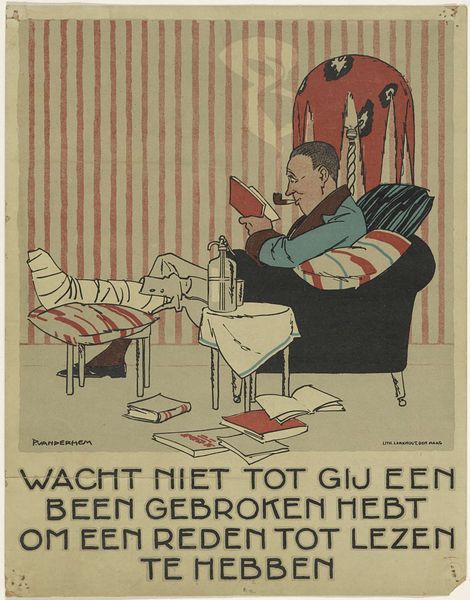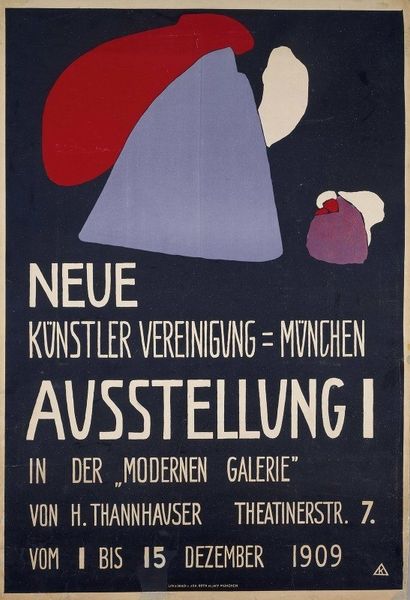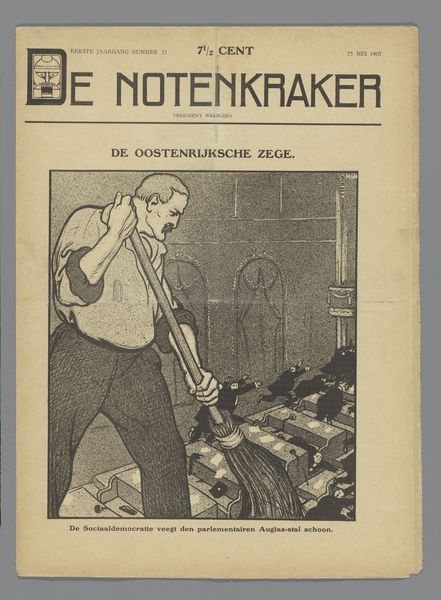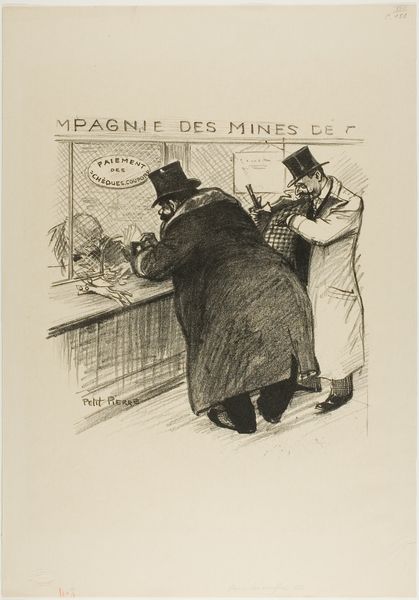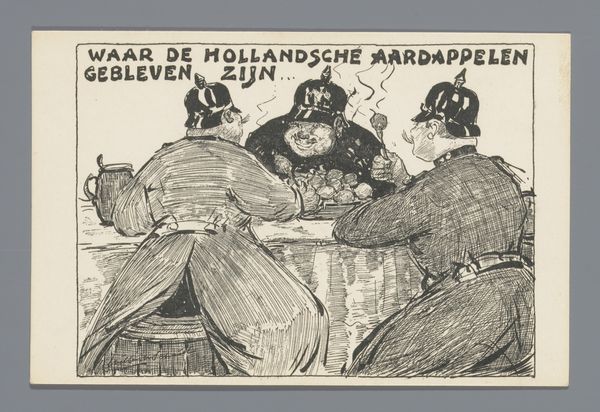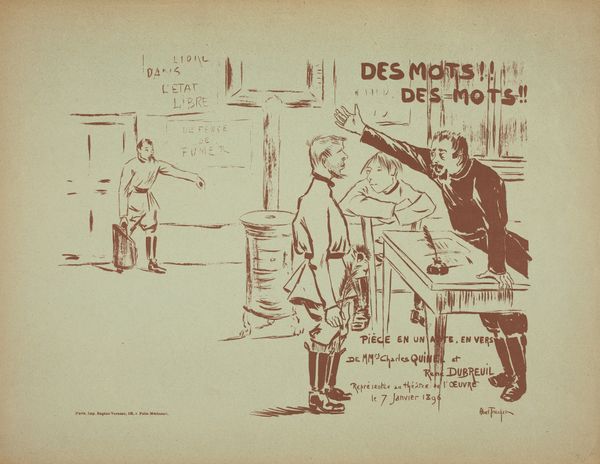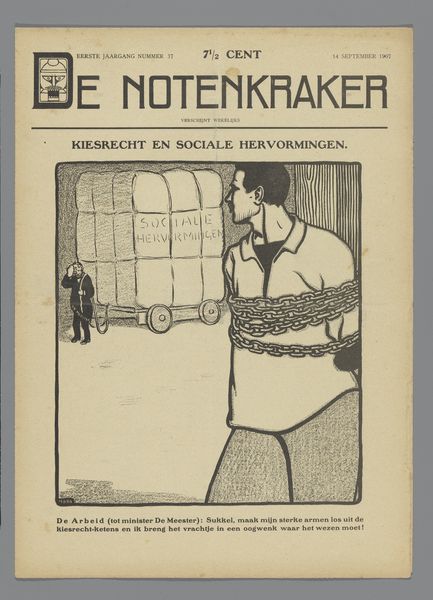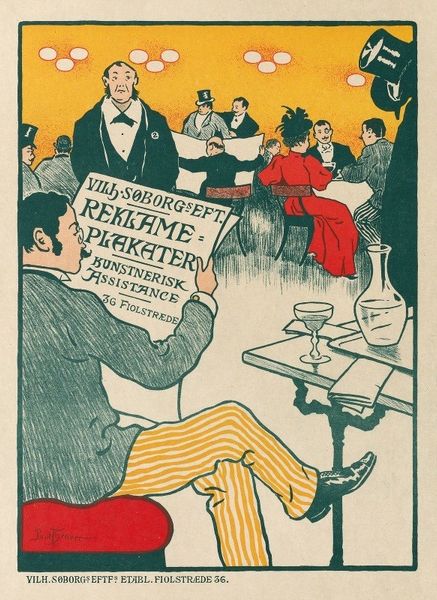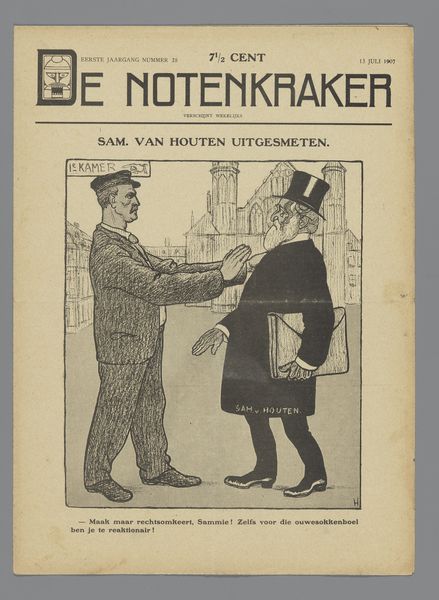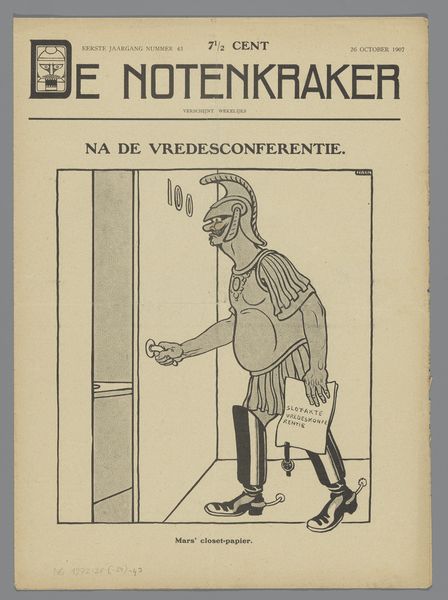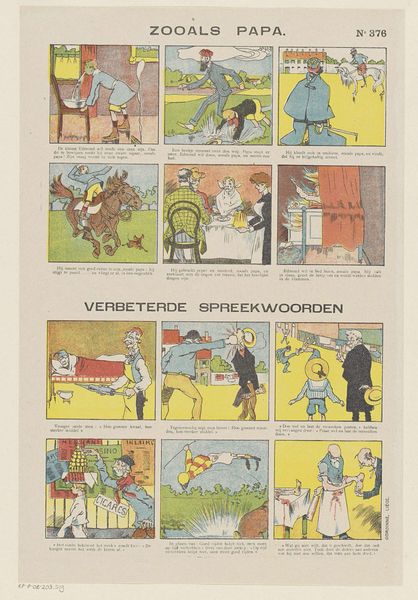
drawing, print, poster
#
drawing
#
cartoon like
#
cartoon based
#
narrative-art
# print
#
caricature
#
cartoon sketch
#
cartoon
#
intimism
#
cartoon style
#
poster
Dimensions: height 323 mm, width 252 mm
Copyright: Rijks Museum: Open Domain
Curator: This piece, titled "Lezende man stoot per ongeluk een fles en glas wijn van tafel"—A Man Reading Accidentally Knocks a Bottle and Glass of Wine off the Table—was created by Piet van der Hem around 1921. It appears to be a print, likely a poster. What strikes you initially? Editor: Well, there's an immediate visual humor, stemming from the dynamic diagonals of the wine spill cutting across the carefully rendered tablecloth and that absurdly surprised figure. It almost feels like a morality tale in visual form, with an amusingly clumsy protagonist at its center. Curator: Indeed. If we examine the construction of this scene, we notice the rather flat rendering of the backdrop which almost seems staged against the boldly lettered aphorism at the base: "A bottle of wine lasts only a few hours and clouds your mind; a good book, which costs as much, clears your thoughts and is a joy forever.” Editor: That textual addition drastically shifts our understanding. This isn’t merely slapstick; Van der Hem employs bold, almost crude cartoonish lines that give form to the figures and objects in such a way that they seem purposefully distorted. Look at the awkward, oversized shoes. The texture of the print contributes to a feeling of unrefined production. Curator: The interplay between form and content is indeed key. Van der Hem uses an accessible style, playing on caricature, to deliver what is fundamentally a class-based message: highlighting the 'better investment' between fleeting worldly pleasures and enduring intellectual enrichment, all available through consumer goods: books or wine. Editor: Perhaps it’s this simplicity of line, coupled with its overt message that lessens the emotional depth. Instead of resonating viscerally, one considers how the image reflects a broader commentary on consumption and leisure in a changing society, its value situated in labor dynamics and moral judgment rather than formal invention. Curator: Precisely. In essence, the image functions as both a critique and an advertisement—its message intertwined with production considerations makes it so poignant. Editor: Yes, and decoding its design, its choices about color, composition and line allows an access point into an artist operating during a rapidly evolving era of social production and dissemination of images. A rather fascinating and perhaps timeless message overall.
Comments
No comments
Be the first to comment and join the conversation on the ultimate creative platform.
